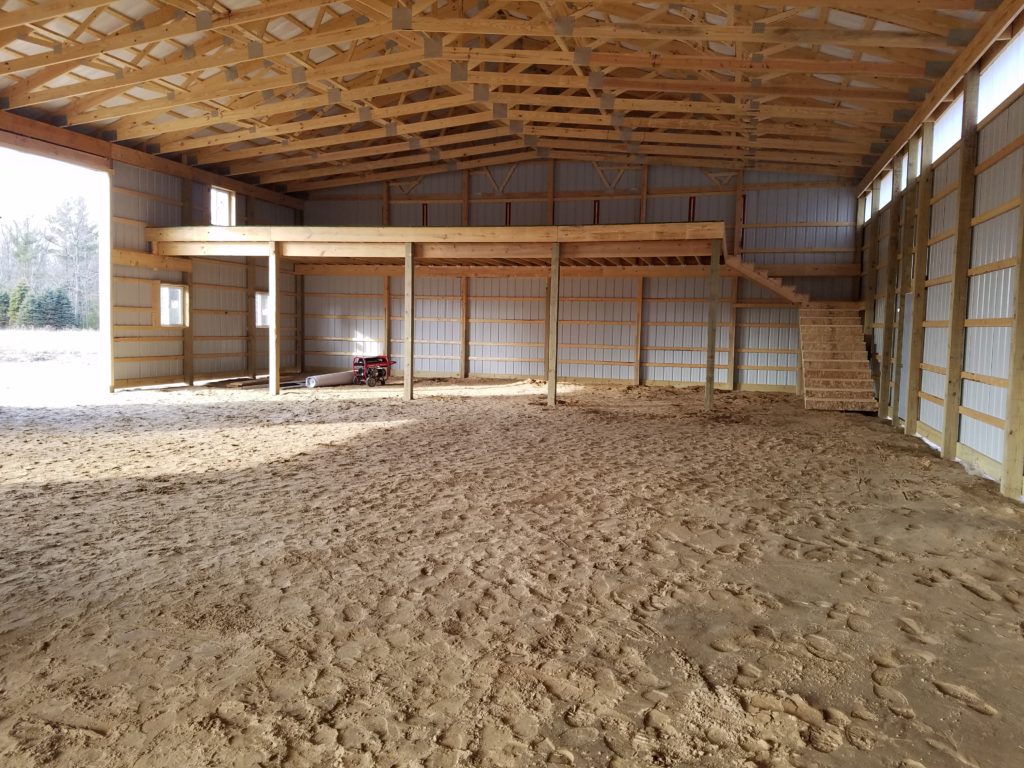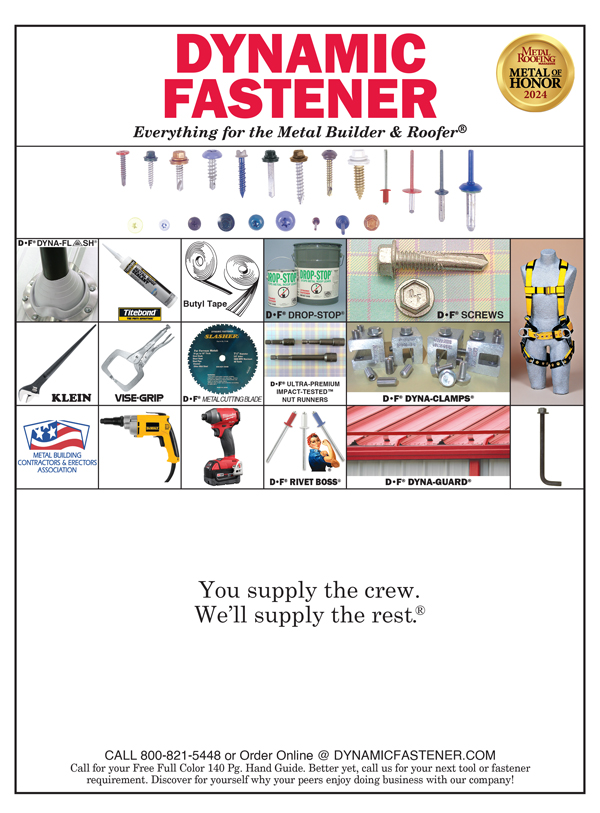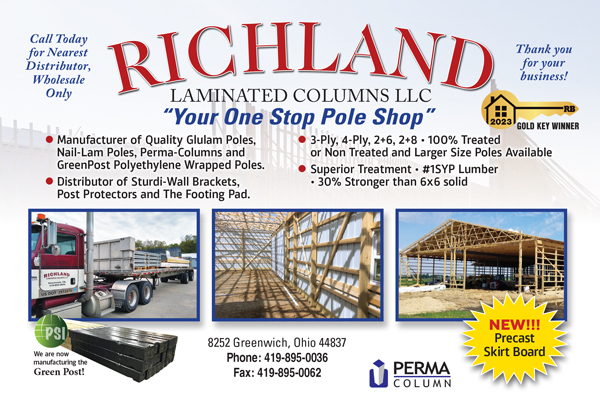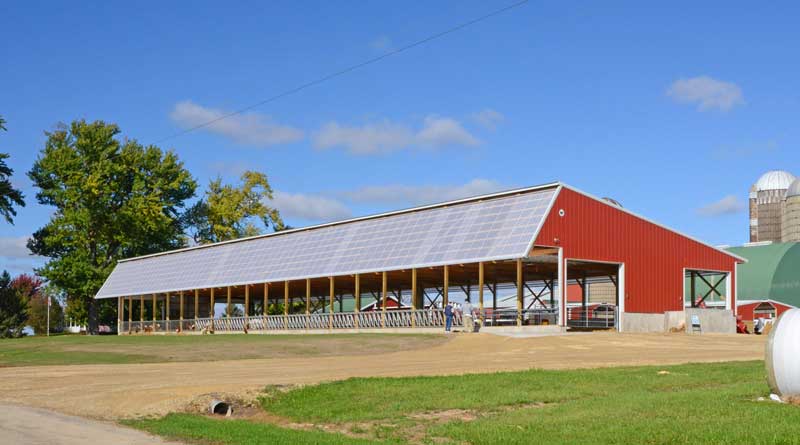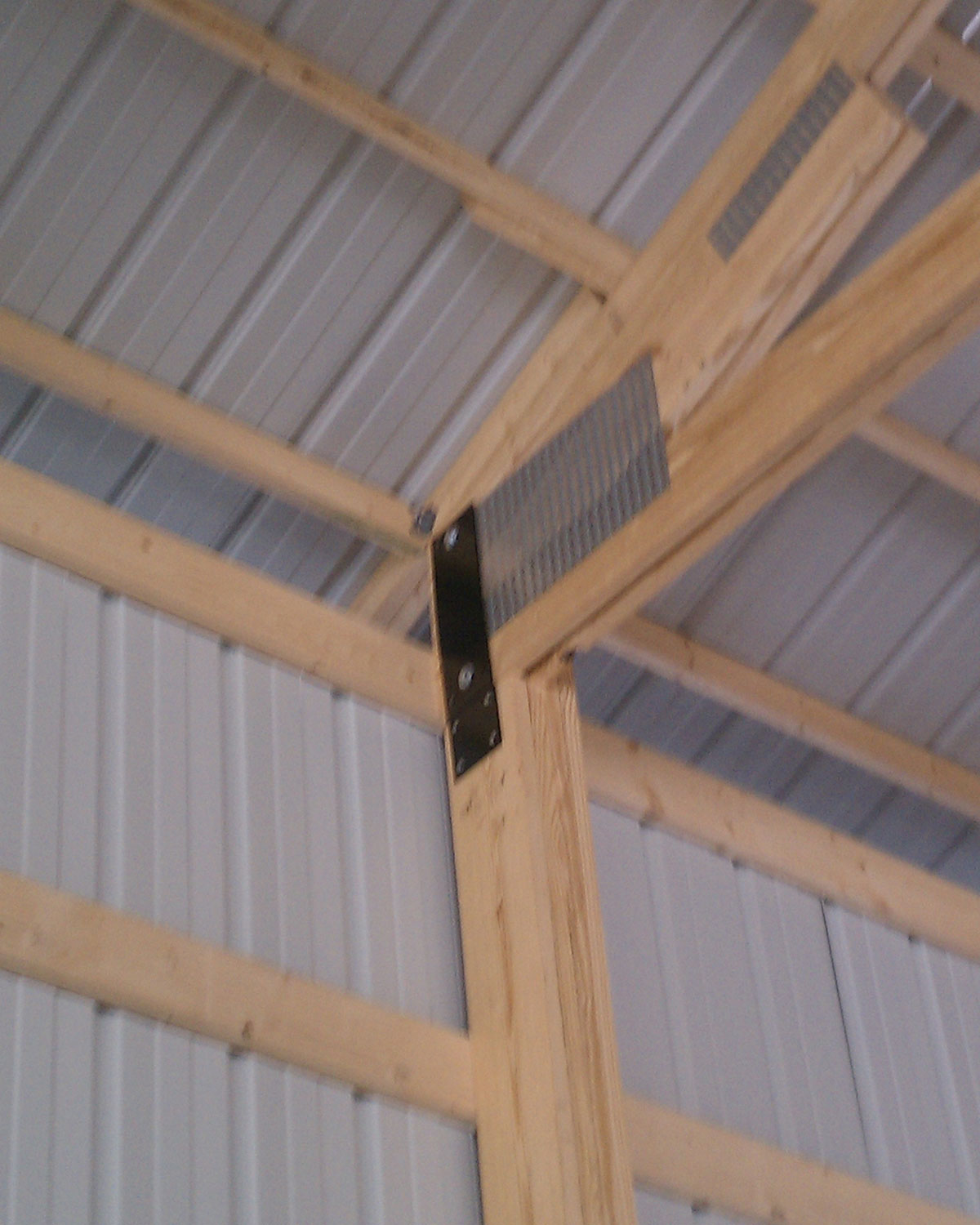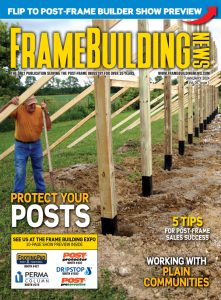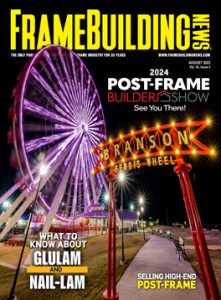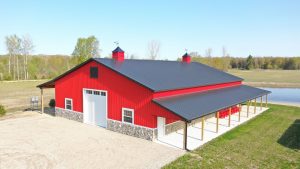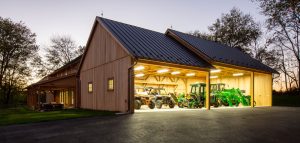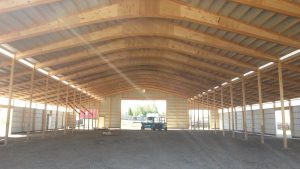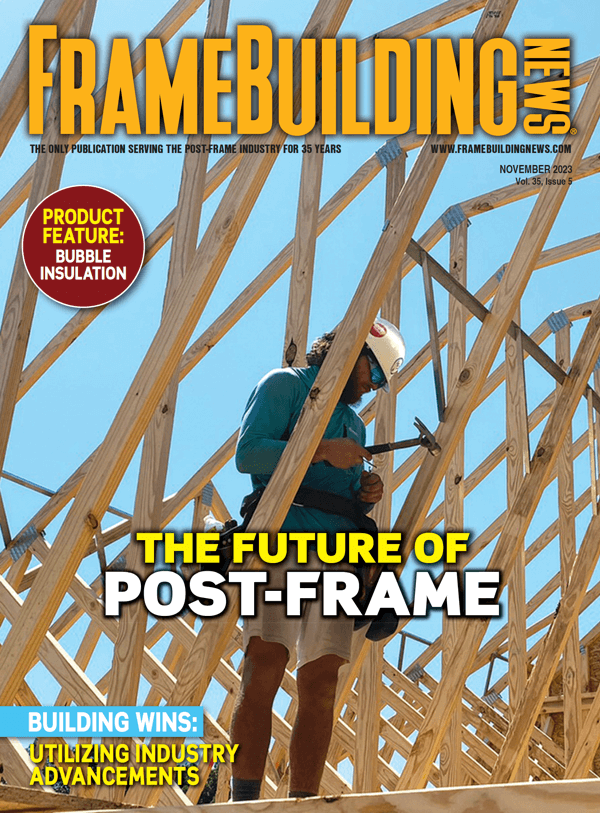By Jacob Prater
If you are putting up a post-frame building and need to save some money, you might look to the floor to save a few bucks. Or if you have a particular use that doesn’t call for a concrete floor, then you might consider some options other than concrete.
Some options are better than others and your choice comes down to the budget and the use. Regardless of what you decide to use as material for the floor, there is one thing you really should do: You must build up a pad to raise the floor of your building even if you are building on a flat or slightly crowned site. This may cost you a bit of money and you may have to bring in some fill, but it’s vital to avoid drainage and puddling issues. Even if you think it’s pretty flat or that you are on a high spot, it is still a good idea to do this.
Building Up a Pad
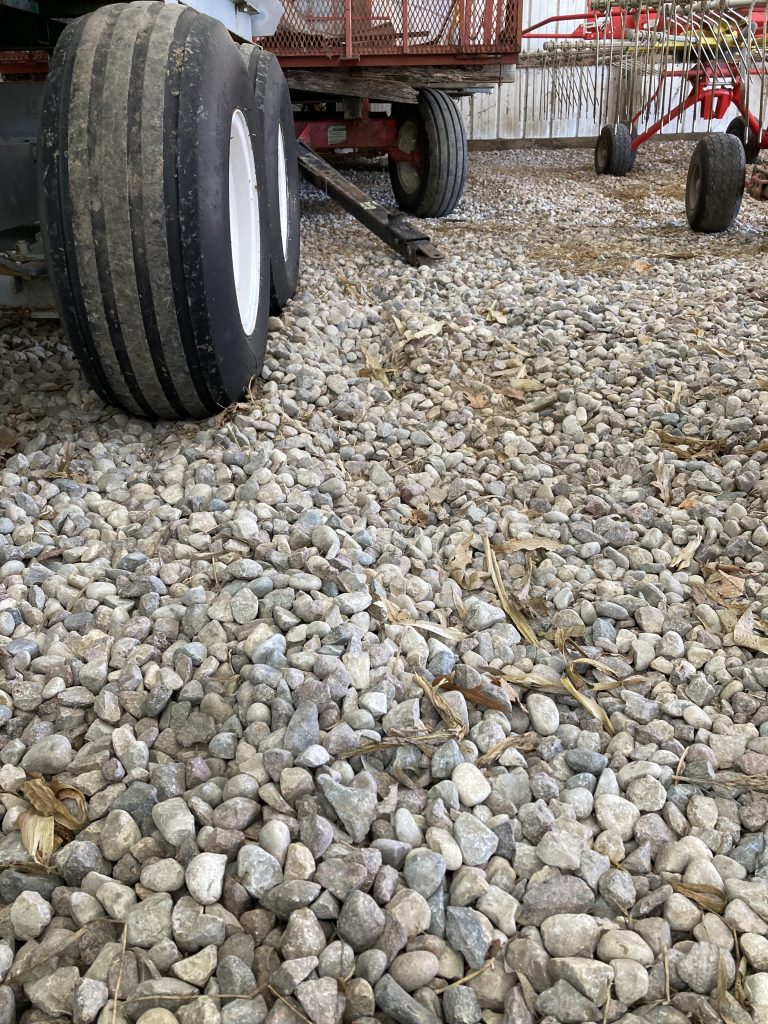
PHOTOS BY JACOB PRATER (UNLESS NOTED)
Building up a pad like this is actually a prerequisite for some builders or they won’t even put up a building for you. When asked about different types of floors in post-frame buildings, Dan Heinen, who is getting close to 60 years of experience, replied, “Yeah they can all work (dirt and gravel), but you have to build up a pad first. We put a few in on flat or even slightly raised ground without a compacted pad and they all ended up with puddling and mud inside them with either gravel or dirt floors.”
The problem as he explained to me was two-fold:
1. Compaction inside the building from livestock or machines leads to a small grade into the building.
2. Snow piled around the building with frozen ground makes for an easy accumulation of water in your building when it melts.
Lest you think you can get away with it, a farmer neighbor of mine, Jason Zilich, described his ordeal with a building erected by his grandfather. “It was always damp and sometimes puddled,” he said. “When I got the farm I had to excavate around it to create a grade away from the building to get water to move away from it instead of slowly leaking in.” His building was constructed without a raised pad on flat ground.
Choosing Your Floor
Once you’ve set yourself up for success with that compacted pad raised up, then you’ve got options. Concrete is often an ideal floor, but it is expensive and may not be your best choice for some uses. You also may need to get that building up fast and therefore you might intend to pour concrete later.

This building has had gravel added after the initial build.
In any event, your other options are gravel (or something like it) and dirt.
Dirt floors are your cheapest option, but they may not be a good choice. Some of the performance of a dirt floor comes down to the properties of the material. Sand, for instance, won’t make a good compacted pad as it doesn’t really compact very well, but it might be pretty good as a surface layer on top of your pad (it will act a bit like gravel, more on that later).
Anything silty isn’t going to compact very well, and really clayey soil may not be great, either. Your pad will ideally be a compactible mixture of sand and clay (think about making a brick here). A compacted dirt floor like this may be good enough for parking machinery or an open-air building, but if you intend to store hay it is likely to get moldy.
Herein lies the problem with dirt floors: They simply wick moisture up from the ground and as a result you will have moisture in your building if it is closed up. If that isn’t an issue, then a dirt floor can work just fine for you. A coat of a couple inches of sand could help reduce that moisture problem, but even better is to bring in several inches of gravel to put on top.
Gravel Floor Pros and Cons
Gravel floors can be cheap and effective and are great for a variety of uses. There only real downside is when you have to lay down on them or move something around in your building that has smallish wheels that don’t move well through the gravel or you have to make some tight turns with machinery. Beyond this they work really well for trucks, tractors, and various other machines that might be parked and moved in and out of your building.
As far as moisture goes, they are a real improvement over dirt floors. That farmer I mentioned — the one who had to excavate around his dirt floor building to create a pad many years after the initial construction — had moldy hay with that dirt floor. He eventually brought in several inches of gravel and solved the problem.
One other thing of note with gravel floors is that they slowly compact and you are likely going to be bringing in a bit more gravel every now and then to address that slow compaction. Also know that gravel will sometimes get dragged out with your machines.
Upgraded Options
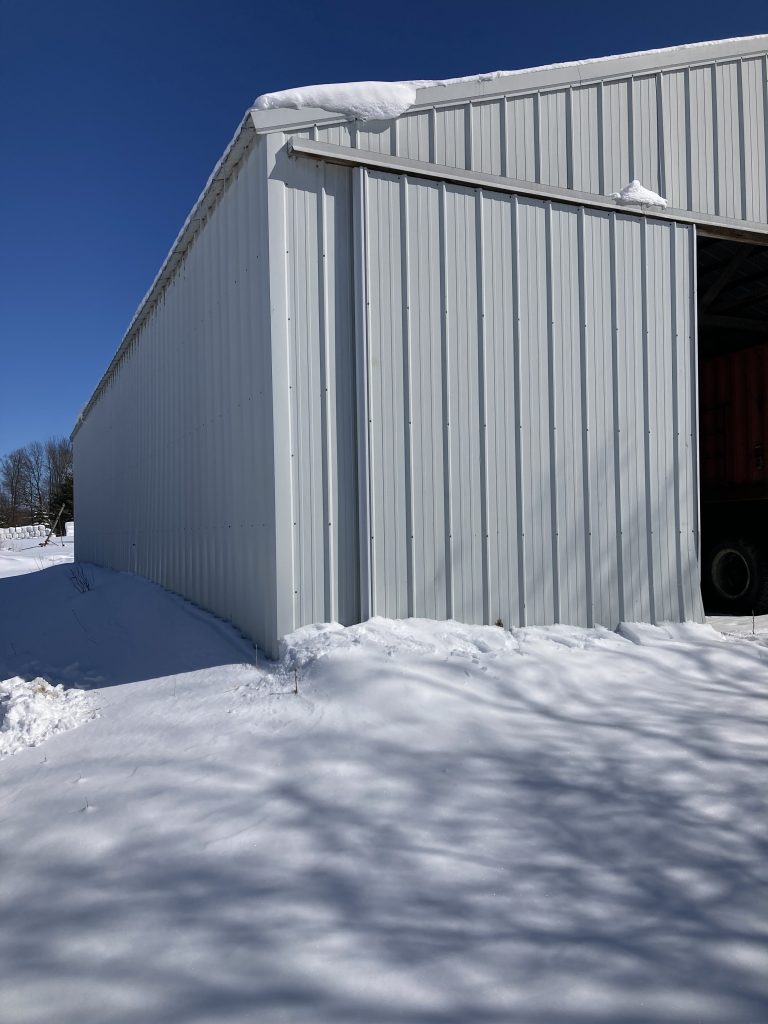
Snow around a building can lead to water intrusion.
There are other options for a floor in your building in addition to dirt and gravel, and with a little creativity you can sometimes use some locally sourced cheap material and get a good result. Crushed recycled asphalt (or even cold patch asphalt) can be ideal for a cheap floor in a machine shed. It packs to a smooth surface so driving on it is great, but it is only a slight step up from a dirt floor when it comes to moisture, so it isn’t a good choice if moisture is a problem for your intended building use.
Another option is crushed concrete. This will basically act just like gravel and could be a nice option if locally available for the right price.
Sometimes the best way to make comparisons is to learn from what others have done. Along that vein, here is the tale of my neighbor and his buildings. You already heard part of it; the excavating around a dirt floor building and subsequent hauling-in of gravel, but that isn’t his only building or learning experience with dirt floors. He’s got another building that had a dirt floor, too.
A couple of gravity boxes with grain were parked in this shed and this led to a rat infestation with burrows in the dirt floor and under an adjacent concrete floored building. This was a huge mess and vermin are definitely something to consider when deciding about using a dirt floor.
The rest of the tale follows a pattern. All of his sheds have slowly been getting floor upgrades. All the dirt floor buildings are now gravel or concrete and the newest buildings he has put up all have concrete floors.
Summary
The message here is simple. Go ahead and plan and budget for the floor that you need, but if you try and do it on the cheap to get your building up quickly, then expect to do some improvements later and deal with some potential issues in the interim. FBN


